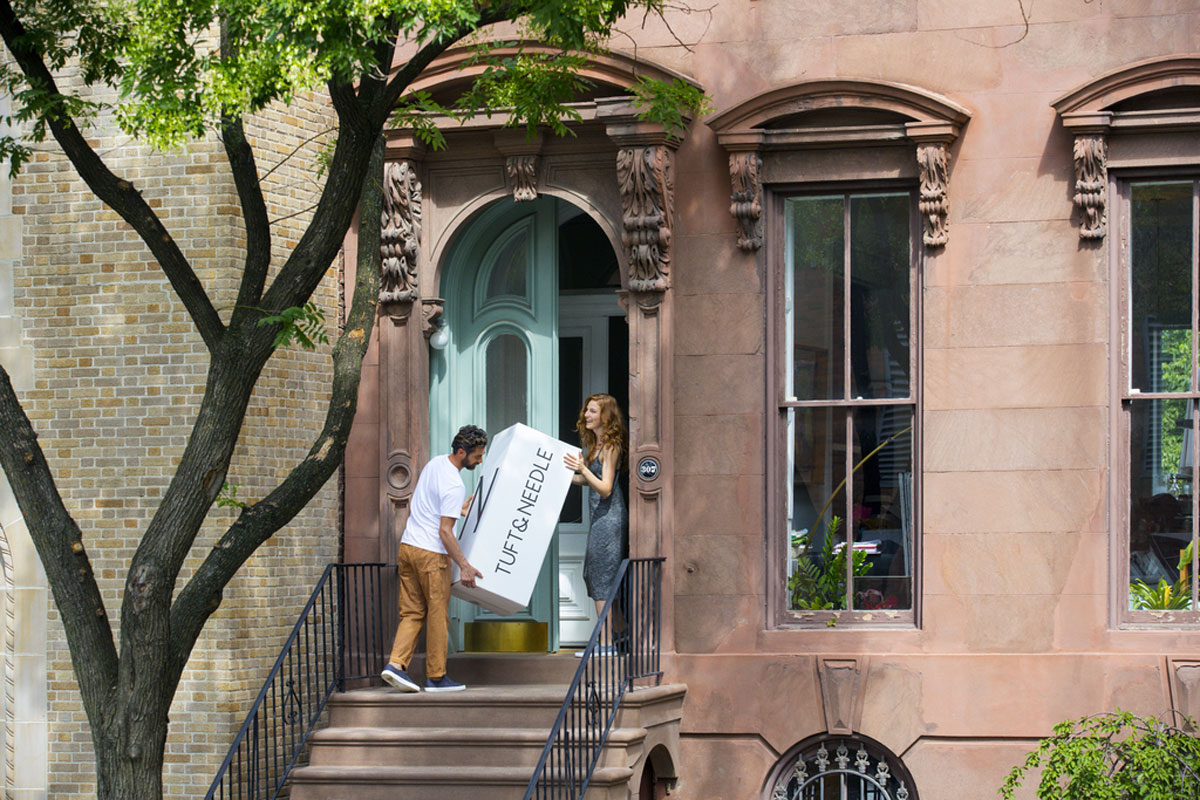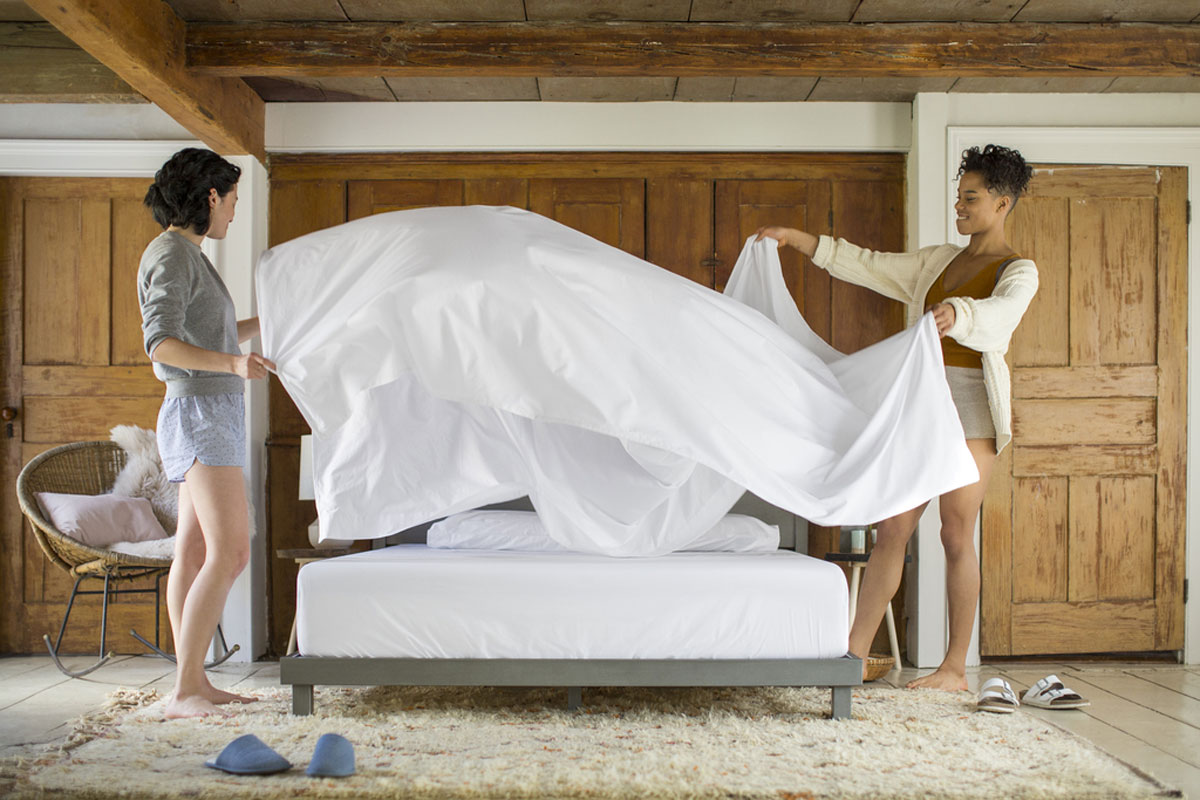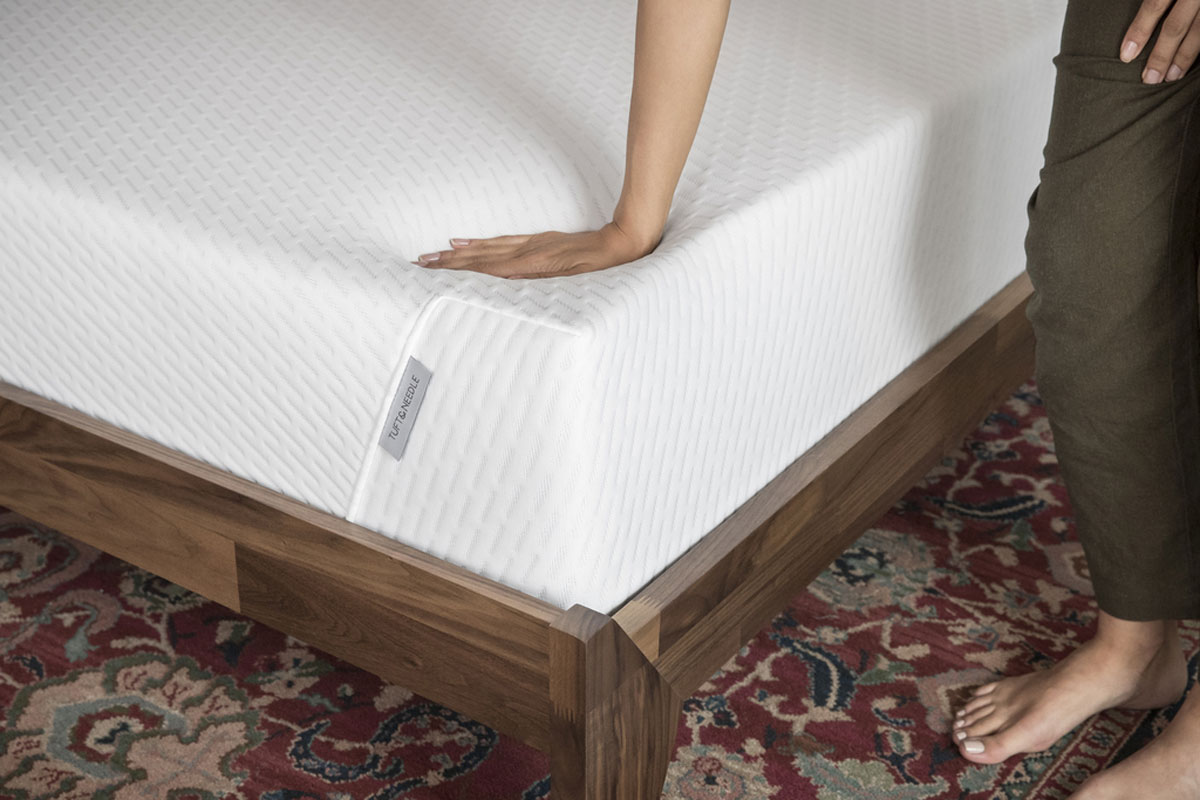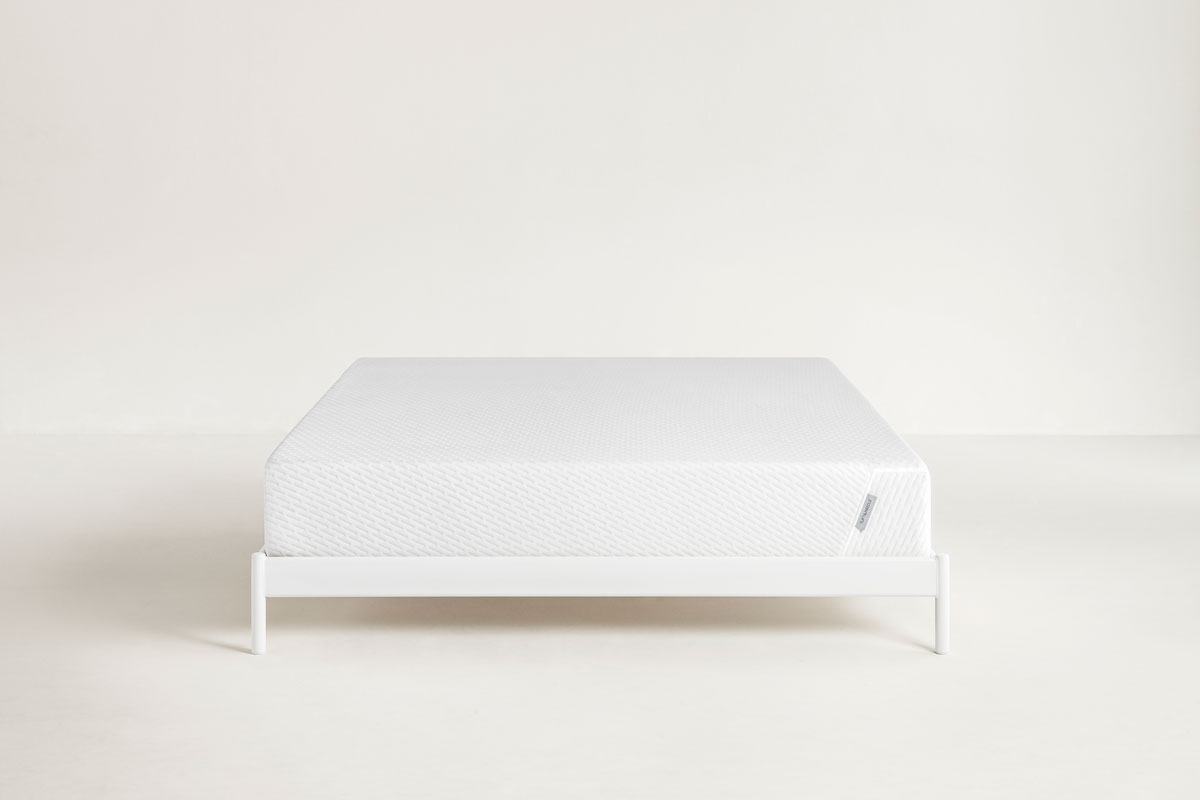When JT Marino couldn’t return the $3,500 mattress he’d bought, he didn’t just get pissed off; he took a knife and cut into the damn thing to learn how to make it better.
JT had worked in Silicon Valley for years, helping tech companies build out their products and teams, but he and his longtime friend Daehee Park wanted to do more. “We’d always talked about building a company of our own,” he says. “We wanted to solve a problem we’d personally experienced, so we thought, ‘What are some really terrible experiences we’ve had?’” One kept coming up—mattress shopping. “It’s worse than shopping for a used car.” It was time to make both the experience and the product better.

“We treat everything like a product—not just the actual mattress, but also the box, how it ships, our policies and warranties, our service, our hiring process, how we treat employees. Everything’s a product and everything’s always improving,” JT says. Photo courtesy of Tuft & Needle
After JT cut up his mattress, he labeled its parts and called manufacturers. “I had to figure out the components, the raw materials.” Then he asked himself what he wanted to achieve. He says the solution was simple; a great mattress needed good pressure relief, support, and coolness. It also needed to ship quickly and stay out of the landfill. But what was wrong with mattress shopping? For starters, walking into a mattress store felt like stepping back in time—not in a fun way. And there were too many options. And what if you hated it once you got it home? “We wanted to cause as much change as we could in the mattress industry so other companies would do the same,” JT says. What began as an ambitious journey in 2012 evolved when Tuft & Needle merged with Serta Simmons Bedding in 2018, which JT says gave the small, innovative company enormous influence.

Mattresses are essentially made to order, as JT says the bottom layer of foam can only be compressed for about six months before it’s damaged. “Generally we make mattresses and ship them all out within seven days.” That’s not like your typical mattress store, where mattresses often come in on the truck flat compressed and stay compressed for a long time. Photo courtesy of Tuft & Needle
What started as just JT and Daehee in 2012 is now a top brand with more than 200 employees across the US and works with four foam factories, one primary fabric factory, and two cut-and-sew factories. Their return rate for comfort is among the industry’s lowest, at below 5% compared to the industry standard of 10 to 15%. Competition has been good, though scary at first, when other companies raised a lot of money quickly and outsourced their design and development when Tuft & Needle did everything in-house. “It was challenging, but it pushed us to stay ahead. It pushed us to constantly change and iterate, which kept us on our toes and made our service better, our design better.” Competitors also spent a lot of funds advertising, which JT calls a blessing in disguise. Ultimately, he says the Tuft & Needle product was better. “When it comes to the mattress, everything you see—the zipper, where the zipper is, what kind of stitch and where the stitch is, everything has been considered,” he says.
“We wanted to solve a problem we’d personally experienced, so we thought, ‘What are some really terrible experiences we’ve had?”
Not only did the brand ultimately scale up production, they also made it easier for consumers to return a mattress purchased online by working with donation centers. “If someone doesn’t like the mattress, we pick it up and have it donated. We do everything we can to keep the mattress out of the landfill.” When cutting the foam to make the mattress, those smaller foam pieces are repurposed to fill Tuft & Needle’s comfy Pouch products (basically oversized beanbag chairs).

Fabric comes from a 90-year-old, family-owned textile mill in the Carolinas. Photo courtesy of Tuft & Needle
Tuft & Needle follows Dieter Rams’ 10 principles of good design for every part of its business, right down to the website. “What is this thing supposed to do and how do we make it as easy as possible?” JT says. “When it comes to the website, why are people coming to the site? They need a mattress, they’re trying to learn about who you are, and then if they decide how to buy, the process should be very easy. You should have all of the information they want in front of them. When they see those elements that maybe they can’t quite define, they just know there’s something about it that they like, it shows people we have good taste.” From the clean, minimalistic box the mattress ships in to the bright, airy storefronts, every choice is deliberate, and it’s all part of the story. “It’s articulating something that’s one of our values—details matter.”
[rp4wp]
JT says the most challenging part of growth has been in finding the right people. “The people you bring into a team and what kind of behavior you encourage is what shapes your brand. You can’t just put a mission statement up on a wall and think you become that; that’s not how it works. You have to find people who naturally have those values … They start making decisions and working together and it manifests into a brand that is very authentic and a brand people trust.”
I’m not a great sleeper. Admittedly, I toss and turn and get up 1,000 times to use the bathroom or get water each night. Like many 30-somethings I know, I’d had my mattress for too long (10 years?). In researching this story, the folks at Tuft & Needle sent me a new one. I was worried about how getting a mattress in a box even worked. Surprisingly, it was super simple; I wish I’d ordered one a long time ago. Once I pushed it up my stairs (you’ll need the buddy system—the box is pretty big), a good night’s sleep was in sight. In minutes I was unrolling this fabric-covered shape wondering how it was going to become a queen bed. Once out of a second, tight layer of plastic, it quickly expanded and I was mesmerized to watch it rise. The mattress itself is firm but soft to the touch—I chose the original—it sleeps cool, and it looks great. It’s simple. It’s thoughtful. And, at the end of the day, I zonked out. —Laura Rote
This article originally appeared in the Fall/Winter 2019 issue of Sixtysix with the headline “JT Marino.” Subscribe today.
PRODUCTION CREDITS:
Produced by Studio Sixtysix
Words by Laura Rote
Photos courtesy of Tuft & Needle
Studio Sixtysix is the in-house creative agency to Sixtysix magazine. Studio Sixtysix stories are conceived, produced, and edited by Studio Sixtysix.



